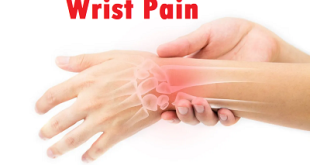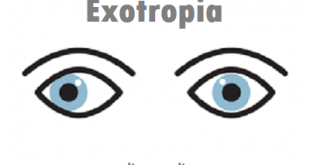Overview – Watery Eyes
Watery eyes can be completely mystifying. You might expect to tear up when remembering a heart-pulverizing breakup or reading about unlikely animal friendships. But in the middle of the day while just going about your life? Not so much. Unfortunately, there are plenty of reasons your eyes might suddenly spring a leak, even seemingly at random.
Pathophysiology
Tears are produced in the lacrimal gland and drain through the upper and lower puncta into the canaliculi and then into the lacrimal sac and nasolacrimal duct. Obstruction of tear drainage can lead to stasis and infection. Recurrent infection of the lacrimal sac (dacryocystitis) can sometimes spread, potentially leading to orbital cellulitis.
Risk factors
- Weather conditions such as wind, cold, and sunshine.
- Eye strain.
- Environmental factors such as bright light and smog.
- Common cold, sinus problems, and allergies.
- Inflammation of the eyelid (blepharitis)
- Eyelid turned outward (ectropion) or inward (entropion)
- Ingrown eyelash (trichiasis)
- Pink eye (conjunctivitis) or other infections
- Blocked tear ducts
- Foreign objects, chemicals, or irritating gases and liquids in the eye
- Cut or scrape on the eye
- Some prescription medications
- Cancer treatments, including chemotherapy and radiation
Causes of Watery Eyes
While infection, irritation, allergies and other causes for watery eyes exist, one of the most common causes of watery eyes and tearing is, oddly, dry eyes. The body senses that the eyes are dry, so it makes more tears.
You may go through periods of raw, dry eyes, followed by teary eyes. This is a common complaint of older people and is, surprisingly, referred to as dry eye syndrome.
There are a variety of reasons behind dry eye syndrome. In general, they are more irritating than dangerous. While some can be addressed medically, others are simply a result of aging:
- Meibomian glands in the eyes normal secrete an oily material that tops tears from evaporating too quickly. When they are not functioning normally, dry patches occur and extra tears are produced. Normally secrete an oily substance that slows the evaporation of tears between blinks.
- When these glands don’t function properly, known as Meibomian gland dysfunction (MGD), it can result in dry patches on your eyes. These become sore, and extra tears are produced as a reflex. This is the most likely cause of watering eyes.
- When the lower eyelid sags, it can be hard for tears to move in their proper path toward drainage ducts. This condition, called ectropion, can be resolved through minor surgery. If lower eyelids roll inward, the same issue can occur. It can also be resolved through surgery.
- An inflammation or infection of the edges of the eyelid can block drainage ducts, resulting in tearing eyes.
- Tear ducts can become blocked or narrowed. Minor surgery can resolve this.
- Eye infections, such as pinkeye, can cause tearing.
Signs and symptoms of watery eyes
Symptoms that can be associated with watery eye and excessive tearing include
- Eye pain
- Eye inflammation or eye infection
- Runny nose
- Vision impairment
- Allergies
- Sneezing
- Eye swelling and
- Eye redness
Complications
Problems may include redness, mucus, dryness, and sensitivity to light.
How are watery eyes diagnosed?
Your doctor diagnoses epiphora by examining your eyes and reviewing your medical history. If your doctor suspects a blocked tear duct, tests can determine the extent of the blockage. Testing includes:
- Your doctor will flush out the ducts with saline in the office.
- Your doctor may put a drop of a special fluorescent dye in the corner of each eye. Instead of liquid dye, your doctor may use a small paper strip containing the dye.
- When tears mix with the dye, it turns bright green.
- After 10 to 15 minutes, your doctor checks your eye, nose, and throat to see if the dye has drained from the eye.
Normally, tears wash the dye from the eye. If the dye remains in the eye, it tells your doctor that the tear duct is blocked. In cases where flushing the tear ducts don’t open them up, your doctor may recommend certain imaging tests to visualize any tear duct blockages. These tests may include a CT scan or a special type of X-ray, called dacryocystography. Your doctor may also use a long, flexible tube with a light source called an endoscope to examine the inside of your nasal cavity.
How are watery eyes treated?
For many people, watery eyes resolve without treatment. If your doctor recommends treatment, your plan depends on the underlying cause of your watery eyes.
- Medications: Your doctor may recommend certain medications, like antibiotics, if an infection or eye injury causes watery eyes. If you have a condition like dry eye syndrome, your doctor prescribes artificial tears or prescription eye drops.
- Foreign objects: If you have a foreign object in your eye, your doctor removes it.
- Blocked tear ducts: If a blocked tear duct causes watery eyes, your doctor uses a saline solution to gently open the blocked duct. In some cases, doctors use a long, thin instrument called a probe to open tear ducts manually. If you have extensive blockages, your doctor may recommend surgery to open your tear ducts.
- Eyelid repair: If the eyelids are sagging (entropion or extropian) the doctor will likely recommend repair of the eyelids.
How to prevent watery eyes?
- Make sure that you do not have a foreign object in your eye. If you have something stuck in your eye, it may be causing that eye to water. Do not try to pull a foreign object out of your eye with your fingers or tweezers. To remove a foreign object from your eye, you will need to wash your eye.
- Use eye drops or “artificial tears.” It may sound counterintuitive to use artificial tears for watery eyes, but you can actually use eye drops to stop watery eyes. Eye drops work well when your eyes are watering because of excessive dryness. Eye drops will help to moisten and lubricate the eyes, which will lead to a decreased production of tears.
- Remove your contact lenses. If your eyes just won’t seem to stop watering, try removing your contact lenses. Contacts can make watery eyes worse while also potentially preventing eye drops from working. Talk to your ophthalmologist if you think your contacts might be to blame for your watery eyes.
- Make an eye compress to soothe irritated eyes. Warm compresses help to remove crust from the eyes while also working to loosen up any toxins that might be blocking your tear ducts. They also help to reduce the redness and irritation that often comes with watery eyes. Run a washcloth under warm to hot water, squeeze out the excess water, and then lay the washcloth across your eyes. Lie down and keep the cloth there for five to 10 minutes.
Getting Help from Your Doctor
- Talk to your doctor about antihistamine for watery eyes caused by allergies. Sometimes watery eyes are caused by an allergic reaction. Taking an antihistamine, or allergy pill, can help to reduce the eye irritation caused by allergies. Just keep in mind that if your watery eyes are not caused by allergies, then the antihistamine might not do anything to help. Talk to your doctor if you are unsure about whether your watery eyes are the result of allergies.
- Ask your doctor about antibiotics. If you go to see a doctor about your watery eyes, she may prescribe an antibiotic if she suspects that you have an infection.
- Consider the medications you are taking. Some medications can cause watery eyes as a side effect. Check the labels of your prescription medications and ask your doctor if you are not sure. If watery eyes is a lasting side effect of a medication you are taking, talk to your doctor about the possibility of switching to something else. Do not stop taking your medication without consulting your doctor first.
Protecting Your Eyes
- Wear goggles to keep foreign objects out of your eyes.
- Wear sunglasses. Sunglasses shield your eyes from harsh UV rays that can cause your eyes to water.
- Use your own eye makeup and other eye products. One of the easiest way to pick up another person’s bacterial or viral eye infection is by sharing products like makeup, eye drops, or washcloths with them.
 Diseases Treatments Dictionary This is complete solution to read all diseases treatments Which covers Prevention, Causes, Symptoms, Medical Terms, Drugs, Prescription, Natural Remedies with cures and Treatments. Most of the common diseases were listed in names, split with categories.
Diseases Treatments Dictionary This is complete solution to read all diseases treatments Which covers Prevention, Causes, Symptoms, Medical Terms, Drugs, Prescription, Natural Remedies with cures and Treatments. Most of the common diseases were listed in names, split with categories.








In fact I really understood the lesson and appreciate the application.
what’s are the effects
Problems may include redness, mucus, dryness, and sensitivity to light.
what a wonderful research work! highly simple, factual and helpful.
how can i overcome eye pain with headache?
Please consult an ophthalmologist.
Thanks for the enlightenment.
Though I noticed your App is no longer in the play store.
Nice one. I am so delighted to know something about my eyes
My son is 1year and 3 month, puss are coming out of his eyes and the eye is also water, wat do I do
Please consult an ophthalmologist to get rid of the problem.
water eys
what can I do for treatment
Please consult a doctor to diagnose the problem.
how Can I overcome watery eye
plz tell me treatment of watery eye and allergic eye and dark circles
Kindly read the treatment from the post.
please help me. my eyes pain and scratching and some time water comes out, what medicine would I use.
Eye pain, itching, and watering can be symptoms of various eye conditions, such as allergies, dry eyes, or infections. It’s essential to consult with an eye care professional for a proper diagnosis and treatment. In the meantime, you may consider using over-the-counter artificial tears for relief from dryness and avoiding rubbing your eyes. If you suspect allergies, antihistamine eye drops might be beneficial, but it’s crucial to seek professional advice for the most appropriate and safe treatment for your specific condition.